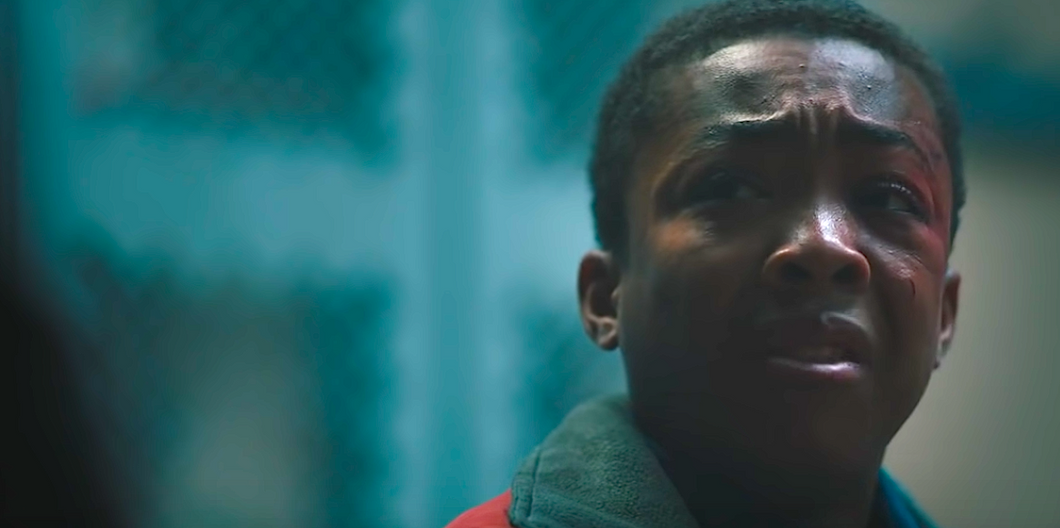Raymond Santana. Yusef Salaam. Korey Wise. Kevin Richardson. Antron McCray.
These are the names of the five teenage boys of color who were wrongfully accused, interrogated, and convicted of the rape and assault of Trisha Meili, a white female jogger.
The Netflix series "When They See Us" is an adaptation of this real-life case, showing us each of the boys' journeys through the criminal justice system after they were arrested as suspects for simply being in Central Park the same night Meili was attacked in April 1989. The show details the true experiences of the boys from the time they are arrested until they are exonerated for their crimes years later.
The reason these boys were suspects in the first place was that there had been incidents of "mischief" and a series of attacks on other civilians in the park that night that were said to have been committed by a group of 30 teens. Santana, Salaam, Wise, Richardson, and McCray were believed to be a part of this group, ultimately connecting them and the other crimes to Meili's attack.
"When They See Us" perfectly encapsulates the mistreatment and injustice the Central Park Five faced while being questioned by police, despite being minors. We see that upon being taken into custody, the boys were subjected to long interrogations and were deprived of food, water, and sleep for at least 24 hours.
Also, despite persistently telling police they were innocent and did not know anything, they were forced to provide detectives with information even if it wasn't true because they were under the impression that they would be let go if they cooperated. Some were even questioned without a parent or guardian present, making it that much easier for them to be coerced because minors are typically unaware of their rights.
After many hours of interrogation, the detectives successfully coerced each of the boys into providing these false confessions through physical abuse, manipulation, and brutality. They were promised that they would get to go home if they provided eye witness testimonies, placing themselves at the scene of the crime to build a case against the other boys, thus implicating one another.
Such interrogation tactics utilized by these officers and others working the case had evident racist undertones that played a pivotal role in falsely convicting these young men. This is why the practices of our justice system need to be reformed and closely monitored in order to prevent wrongfully convicting the innocent.
Most of the confessions were taped and used as one of the main pieces of evidence presented by the prosecution during the trials. However, these tapes only showed the confessions themselves, not the hours worth of coercion and abuse during the interrogation leading up to them.
Not to mention there was no physical evidence implicating any of the five boys in the rape and assault of the woman. In fact, the only DNA that was recovered from the crime scene did not match that of Santana, McCray, Salaam, Richardson, or Wise. However, the prosecution played this off as the DNA belonging to a sixth party that happened to get away before police arrived at the park.
On top of all of this, the boys could not pinpoint the correct location or time of the attack, their confessions were inconsistent with the presented evidence and the facts of the case, there was no blood on their clothes, and they did not even correctly describe the woman's clothing.
Unfortunately, the jury still found all of the boys guilty.
Santana, McCray, and Salaam were convicted of rape, assault, robbery, and rioting and were sentenced to five to ten years in a youth correctional facility. Richardson was found guilty of attempted murder, rape, robbery, and assault and was sentenced to five to ten years in a juvenile detention center. Wise was the only one who was tried as an adult and was sentenced to five to fifteen years in prison.
While behind bars, each of the boys experienced the horrors of the American prison system. They were mistreated by guards, assaulted by inmates, and spent time in solitary confinement, as we see in the show. Donald Trump also paid for full-page ads in multiple New York City newspapers advocating for the reinstatement of the death penalty so that these boys would be executed.
If this doesn't prove that our justice system is broken, I don't know what does. To convict someone and want them to be sentenced to death based on merely circumstantial evidence with a lack of substantial physical evidence is beyond me. And for minors to be subjected to such foul practices at the hands of law enforcement is a miscarriage of justice and disgusting, to say the least.
It is also no secret that people of color disproportionately come in contact with the criminal justice system compared to their white counterparts, as this case reflects.
It was not until years later in 2002 when the actual perpetrator and serial rapist, Matias Reyes, confessed to the rape and assault of Trisha Meili, admitting that he acted alone. His DNA also matched the evidence found at the crime scene, and he provided investigators with such detailed, specific information about what he did, which led to the case being re-opened and investigated. It was even discovered that Reyes raped another woman in the park two days before Meili and he was not connected to the five boys or the 30 youths from the park in any way.
Although the Central Park Five had already served their time for these crimes and had been released, they were finally exonerated of all charges and received a total of $41 million from a civil lawsuit against the city of New York.
"When They See Us" detailed all of this throughout the four episode mini-series, revealing just how compromised, unjust, and discriminatory the United States criminal justice system is, and how society decides people are guilty until proven innocent.















